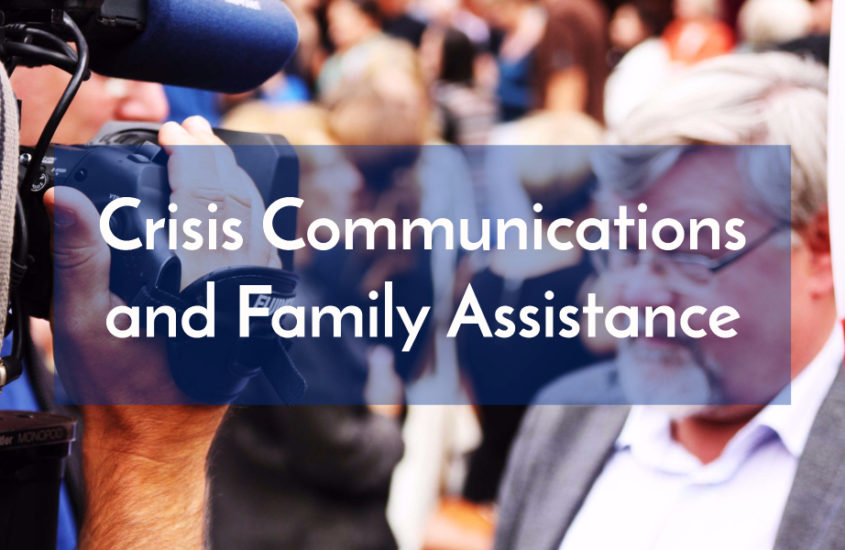Crisis Communications and Family Assistance

Today many companies plan for and manage crisis communications as a public relations action and the family assistance activities as purely psychological support, often not connecting the two. In our experience, both activities are closely related and tie into each other.
To begin with, identify the audience – e.g., families, employees, partners, governments and investors. For these groups, the key message should be what you are doing to manage the consequences of the event. You can’t undo the event that has just occurred. Yet many CEOs and companies focus their immediate message on what has happened. Acknowledge the event, but focus your resources and message on managing the consequences of the event.
Secondly, identify the important message areas. Here are my recommendations:
- Acknowledge what has happened – simple and straightforward. You are the lead in this area.
- Sympathy – say you are sorry without caveats or limitations. The most accepted apologies are straightforward, simple and sincere. It is not an acknowledgement of guilt or responsibility for the event, but an expression of compassion, concern and human kindness to those who have been directly impacted by an event and their families.
- What to expect – this is the key message that is most often forgotten. Yet it is, after an apology, the most important aspect of communication and family assistance. The survivors and families will likely have never been through a sudden, unexpected event resulting in large-scale loss of life. They will have access to the same information you see regarding the:
- Recovery, identification and repatriation of loved ones.
- Recovery, identification and repatriation of loved ones property.
- Investigation process, not the investigation conclusions – but how an investigation is completed.
- Compensation process.
- What is being done to understand what has happened – this is important, but not the key focus as many make it. For most events, the “why” will not be known for many months, possibly even years. What you say is that you are supporting the authorities in their processes and will adjust your operations accordingly based on official reports and recommendations. You want the truth and want to be transparent. Do not speculate, the leads here are the authorities.
The role of communications and family assistance is to explain to the family members what the information they are receiving means to them, in practical terms. Help them understand the decisions they as survivors or family members will need to make and what information is available to help them make those decisions.
Remember, the families will have information from various authorities, media pundits and others. But what they won’t get from those groups is what the incoming information means to them. How do they use that information to plan things like funerals, closing estates, settlements and transitioning from what was normal to what will be normal? Helping explain those things is probably the biggest job we do in communications and family assistance following many of the crises we are involved in.
Finally, how do you do this? There are several means to getting these messages across and providing practical useful support. There are the normal media updates, but also consider including this information in family assistance center briefs. Train your family assistance team in the practical aspect of response, not just the support aspects. Hold town hall meetings for employees or related groups. Implement family websites – a most important tool and one we have been using for many years.
A tool we use and have used for several years now is the family website. This is a website designed to serve as a single source of information for families following a major loss-of-life event.
The key to success is being open, focusing on what you can change – what you do after the accident. Translate the information people are getting into what it means to them in practical terms.
